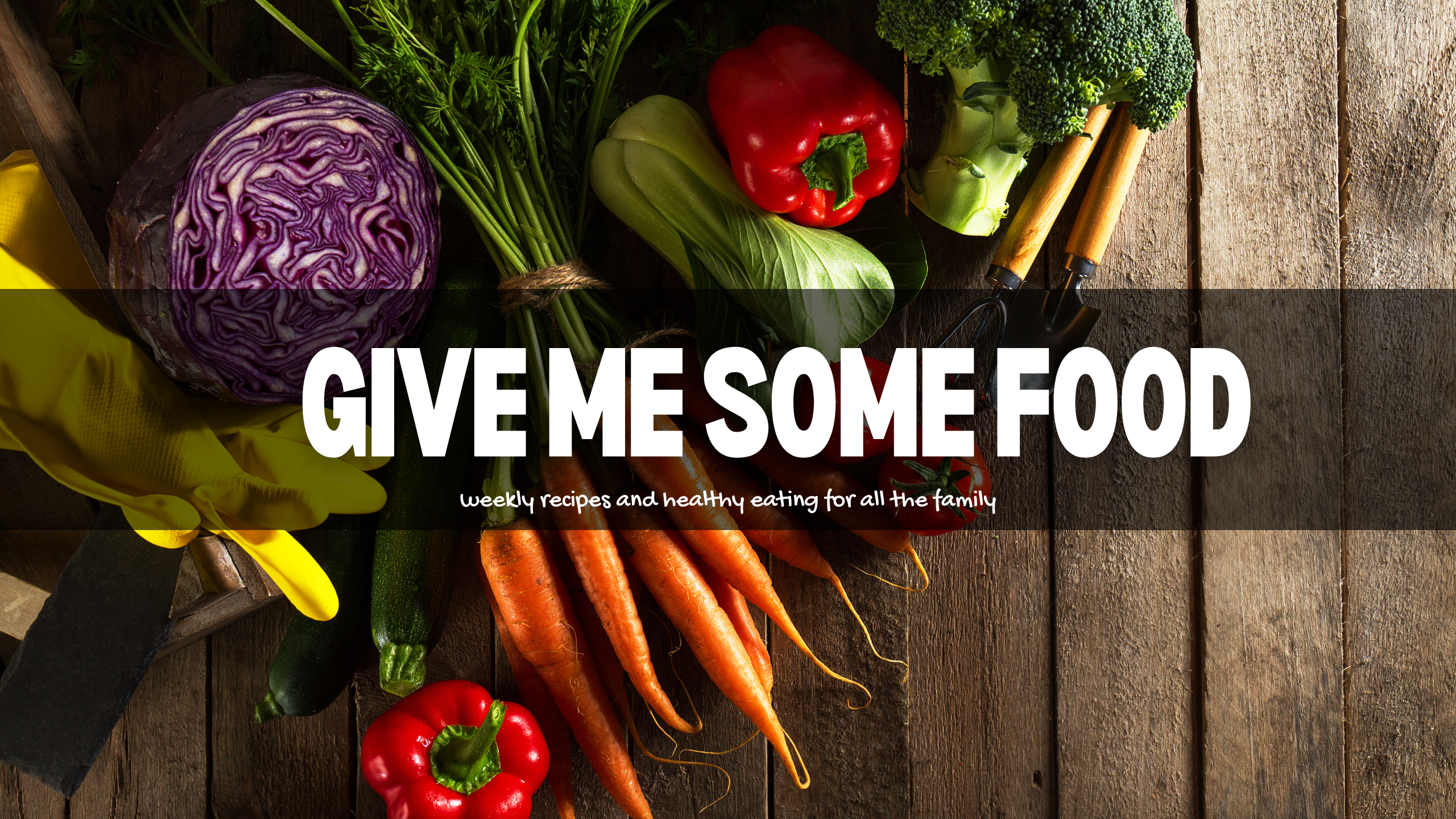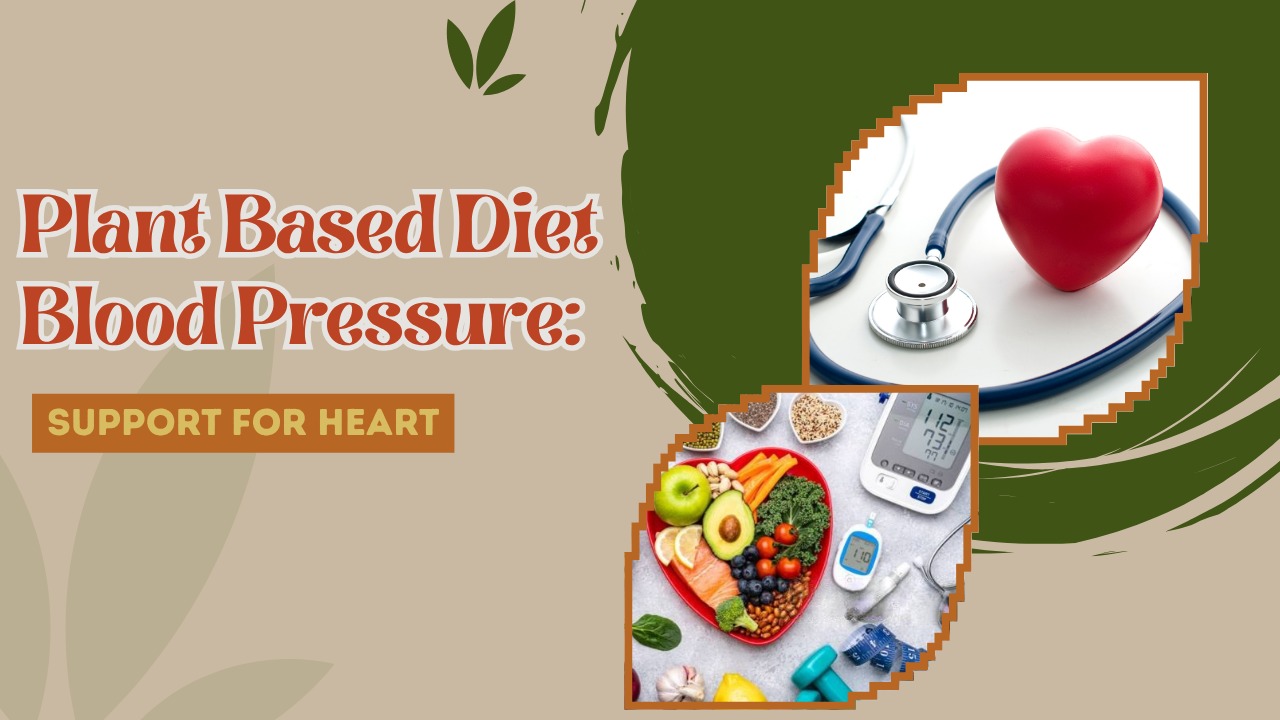High blood pressure, or hypertension, impacts more than 1.4 billion people worldwide, posing serious risks for heart disease, stroke, and kidney failure. While medication remains a common treatment, research increasingly shows that dietary choices can play a powerful role in managing this condition. One promising approach is the plant based diet blood pressure connection.
A plant-based diet emphasizes fruits, vegetables, whole grains, legumes, nuts, and seeds while limiting or avoiding animal products. This eating style is naturally low in sodium and saturated fat but rich in potassium, fiber, and antioxidants—nutrients known to help relax blood vessels and improve circulation. As a result, many people experience lower blood pressure levels within weeks of making the switch.
Studies reveal that those following a plant based diet blood pressure plan often see reduced reliance on medication, improved heart health, and better overall wellness. This makes it a sustainable and effective lifestyle choice for long-term blood pressure control.
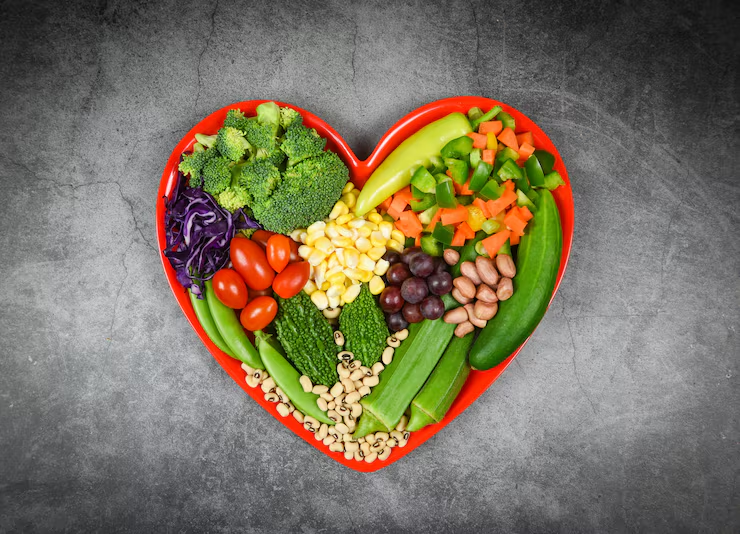
🥦 What is a Plant-Based Diet ?
A plant-based diet focuses primarily on foods derived from plants, including fruits, vegetables, whole grains, legumes, nuts, and seeds. It minimizes or completely avoids animal products such as meat, dairy, and eggs. When designed properly, a plant based diet blood pressure plan provides all the nutrients your body needs while supporting heart health.
This eating style is naturally low in sodium and saturated fat but rich in potassium, fiber, and antioxidants. These components are known to help relax blood vessels, improve circulation, and reduce strain on the cardiovascular system. As a result, following a plant based diet blood pressure approach can help lower hypertension risk and promote long-term wellness.
Beyond lowering blood pressure, a plant-based diet can improve energy levels, aid in weight management, and reduce the risk of chronic diseases. A well-balanced plant based diet blood pressure lifestyle offers both preventive and therapeutic health benefits.
A plant-based diet emphasizes whole, minimally processed plant foods. It focuses on:
Fruits and vegetables
Whole grains
Legumes (beans, peas, lentils)
Nuts and seeds
Herbs and spices
It may be either strictly vegan (excluding all animal products) or flexibly vegetarian (allowing small amounts of dairy, eggs, or fish).
What makes it distinct is the prioritization of plants over animal-based products, ultra-processed foods, and added fats/sugars.
🌡️ The Connection Between Plant-Based Diet and Blood Pressure
High blood pressure occurs when the force of blood against artery walls is consistently too high. It strains the heart and blood vessels, leading to serious complications.
Here’s how a plant-based diet helps:
Reduces Sodium Intake: Whole plant foods are naturally low in sodium.
Increases Potassium Intake: Found in bananas, spinach, sweet potatoes—potassium helps counteract sodium.
Promotes Healthy Weight Loss: Fiber-rich, low-calorie foods aid in shedding excess weight, a major factor in high blood pressure.
Improves Arterial Function: Plant foods support the endothelium (inner lining of blood vessels).
Anti-inflammatory & Antioxidant-rich: Reduces oxidative stress that contributes to vascular stiffness.
🧠 What Science Says: Evidence-Based Support
Multiple studies support the effectiveness of plant-based diets for managing and reducing blood pressure:
🔍 Adventist Health Studies
The Adventist Health Studies, conducted at Loma Linda University, examined lifestyle and diet patterns among Seventh-day Adventists, a group with a high proportion of vegetarians and vegans. Data from AHS-2 revealed that vegetarians and vegans had significantly lower average systolic and diastolic blood pressure compared to omnivores.
🔍 DASH Diet
The DASH (Dietary Approaches to Stop Hypertension) diet, though not strictly vegan, emphasizes fruits, vegetables, whole grains, legumes, and nuts—making it a plant-forward approach. Clinical trials have shown that following DASH can reduce systolic blood pressure by 8–14 mmHg in hypertensive individuals. When paired with reduced sodium intake, results improve even further.
🔍 The EPIC Study
The European Prospective Investigation into Cancer and Nutrition (EPIC) study tracked hundreds of thousands of participants across multiple European countries. It found that plant-based eaters—especially vegans and vegetarians—had significantly lower risks of developing hypertension compared to meat-eaters. Researchers linked this to higher intake of potassium, antioxidants, and plant polyphenols, which improve arterial flexibility and reduce vascular inflammation.
🔍Meta-Analyses
A 2020 meta-analysis published in JAMA Internal Medicine pooled data from multiple randomized controlled trials. It concluded that vegetarian diets reduced systolic blood pressure by an average of 4.8 mmHg and diastolic by 2.2 mmHg. While these numbers may seem modest, even small reductions significantly lower the risk of stroke and heart attack at a population level.
🧬 How Plant-Based Diets Improve Blood Pressure: The Mechanisms in Depth
Understanding the science behind the benefits can help strengthen your commitment. Here’s how plant-based diets work on a biological level:
Vascular Relaxation Through Nitric Oxide Production
Leafy greens like spinach and arugula are rich in nitrates.
Once consumed, your body converts them to nitric oxide, which dilates blood vessels and improves circulation.
This leads to reduced vascular resistance, one of the major causes of elevated blood pressure.
Lower Viscosity and Improved Blood Flow
Animal fats and cholesterol thicken the blood, making it harder for the heart to pump.
A low-fat plant-based diet reduces blood viscosity, easing the workload on your heart and lowering pressure.
Reduction in Inflammation
Chronic inflammation contributes to hypertension and heart disease.
Plant-based diets are high in polyphenols, flavonoids, and carotenoids, all of which fight oxidative stress and inflammation.
Improved Kidney Function
High BP can damage kidneys, but poor kidney function can also cause high BP.
Plant-based diets improve kidney health by reducing acid load and decreasing protein waste burden.
🌟 Top Effective Tips: Using a Plant-Based Diet to Lower Blood Pressure
🍠 Prioritize Whole, Unprocessed Plant Foods
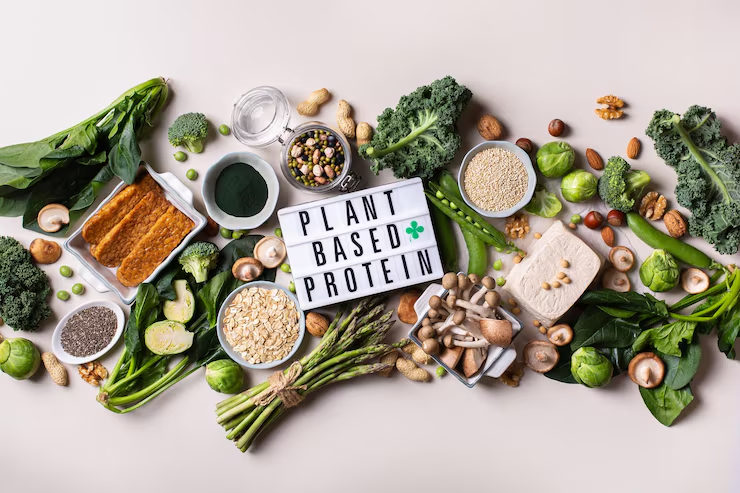
Prioritizing whole, unprocessed plant foods is a key strategy for improving health and managing hypertension. Fresh fruits, vegetables, whole grains, legumes, nuts, and seeds provide essential nutrients without the excess sodium, sugar, and unhealthy fats often found in processed foods. This makes them a core component of the plant based diet blood pressure approach.
Whole plant foods are rich in potassium, magnesium, and fiber—nutrients that support healthy blood vessel function and help the body maintain optimal fluid balance. These natural properties make them effective in lowering blood pressure, reducing strain on the heart, and improving overall cardiovascular health. Avoiding refined and packaged products further enhances these benefits.
Incorporating a variety of unprocessed plant foods into daily meals can lead to gradual yet lasting improvements. For those aiming to follow a plant based diet blood pressure plan, focusing on whole foods ensures nutrient density, better energy levels, and sustainable heart health.
Refined carbs and sugars can spike blood pressure. Instead, focus on:
Sweet potatoes, quinoa, brown rice
Leafy greens, berries, carrots, legumes
Whole foods are nutrient-dense and fiber-rich—essential for heart health.
🧂 Minimize Sodium Intake
Minimizing sodium intake is essential for maintaining healthy blood pressure levels and reducing the risk of heart disease, stroke, and kidney problems. Excess sodium causes the body to retain water, increasing blood volume and putting added pressure on the arteries. This principle is especially important when following a plant based diet blood pressure plan.
While a plant-based diet naturally contains less sodium than processed and animal-based diets, hidden salt can still be present in canned goods, sauces, and packaged snacks. Choosing fresh, whole plant foods and flavoring meals with herbs, spices, lemon juice, or vinegar instead of salt can help keep sodium levels in check.
People adopting a plant based diet blood pressure lifestyle often find that reducing sodium not only supports healthier blood pressure but also enhances energy levels and overall well-being. Over time, taste buds adapt, making naturally flavored plant foods more satisfying and enjoyable without added salt.
While plant foods are naturally low in sodium, processed vegan items (like mock meats or canned soups) can be loaded with salt.
Tips:
Cook at home using fresh ingredients
Choose low-sodium canned beans or rinse them
Use herbs, lemon, and vinegar instead of salt
🍌 Boost Potassium-Rich Foods
Boosting potassium-rich foods is a powerful way to support heart health and manage hypertension. Potassium helps balance sodium levels in the body, relaxes blood vessel walls, and promotes better circulation. This makes it an important component of a plant based diet blood pressure plan aimed at naturally lowering hypertension risk.
Plant-based sources of potassium include bananas, sweet potatoes, spinach, avocados, beans, and lentils. These foods not only supply ample potassium but also deliver fiber, antioxidants, and other nutrients that further benefit cardiovascular health. Incorporating a variety of these into meals ensures steady blood pressure control.
Following a plant based diet blood pressure approach that prioritizes potassium-rich foods can lead to measurable improvements within weeks. Combined with reduced sodium intake and regular physical activity, this strategy can help decrease dependence on medication and promote long-term wellness, making it a sustainable and heart-friendly lifestyle choice.
Top Plant-Based Sources:
Bananas
Avocados
White beans
Potatoes with skin
Spinach
🥗 Eat Leafy Greens Daily
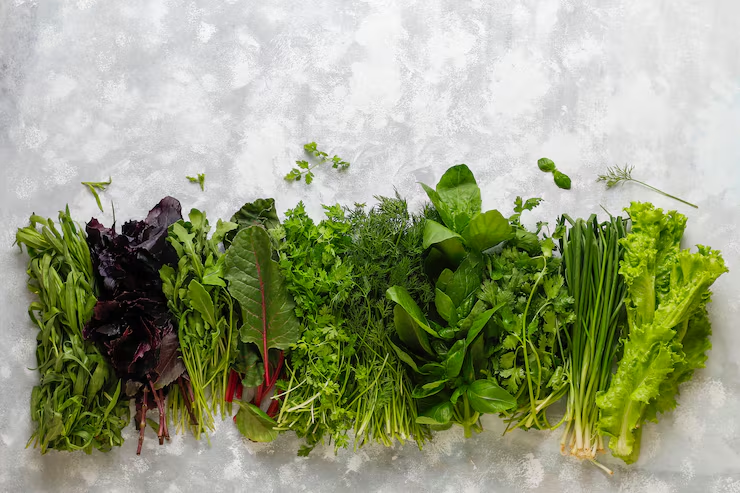
Eating leafy greens daily is one of the most effective steps for supporting cardiovascular health and controlling hypertension. Leafy greens such as spinach, kale, collard greens, and Swiss chard are packed with potassium, magnesium, and nitrates, which help relax blood vessels and improve circulation. These nutrients make them an essential part of a plant based diet blood pressure plan.
In addition to their nutrient density, leafy greens are low in calories and high in antioxidants, which combat inflammation and oxidative stress—two factors that can contribute to high blood pressure. Eating them raw in salads, lightly steamed, or blended into smoothies ensures you get the maximum benefit.
Incorporating a variety of leafy greens into your plant based diet blood pressure routine can lead to noticeable improvements in heart health over time. Regular consumption supports better vessel function, lowers strain on the heart, and provides lasting protection against hypertension-related complications.
Leafy greens like kale, arugula, Swiss chard, and spinach are rich in nitrates, which help open blood vessels and improve flow.
Add them to:
Smoothies
Salads
Stir-fries
Wraps
🚫 Limit or Avoid Caffeine and Alcohol
Limiting or avoiding caffeine and alcohol is an important step in maintaining healthy blood pressure levels. Excess caffeine can temporarily raise blood pressure by stimulating the nervous system, while alcohol, when consumed in excess, can cause long-term increases in blood pressure and strain on the heart. For those following a plant based diet blood pressure plan, moderation is key to achieving lasting results.
Replacing caffeinated drinks with herbal teas, infused water, or fresh vegetable juices can help reduce blood pressure spikes and improve hydration. Similarly, limiting alcohol intake or choosing alcohol-free alternatives supports better cardiovascular function and overall wellness.
A plant based diet blood pressure lifestyle works best when paired with healthy beverage choices. By minimizing caffeine and alcohol, you not only enhance the benefits of nutrient-rich plant foods but also reduce unnecessary strain on your heart and blood vessels, creating a sustainable path to better long-term health.
While moderate intake may be okay, both substances can increase blood pressure in sensitive individuals.
Plant-based alternatives:
Herbal teas
Green tea (in moderation)
Mocktails made with sparkling water, lemon, and herbs
💧 Stay Hydrated with Water and Herbal Teas
Staying hydrated with water and herbal teas is essential for maintaining healthy circulation and supporting overall heart function. Proper hydration helps the body regulate sodium levels, maintain optimal blood volume, and keep blood vessels flexible. This makes it a vital habit for anyone following a plant based diet blood pressure plan.
Water should be the primary beverage of choice, as it contains no added sugars, sodium, or caffeine. Herbal teas, such as hibiscus, chamomile, and rooibos, not only contribute to hydration but also offer natural compounds that may help lower blood pressure. Avoiding sugary drinks and sodas further enhances the benefits of hydration.
A plant based diet blood pressure approach combined with consistent hydration supports efficient nutrient delivery and toxin removal from the body. By choosing water and herbal teas daily, you can maximize the positive effects of plant-based eating and maintain healthy blood pressure levels for the long term.
Dehydration can cause the blood to thicken and raise pressure.
Best drinks:
Plain water
Hibiscus tea (clinically shown to lower BP)
Unsweetened green tea
🏃♂️ Combine with Exercise & Stress Management

Combining regular exercise with stress management techniques is a powerful way to enhance the benefits of a plant based diet blood pressure plan. Physical activity strengthens the heart, improves blood vessel flexibility, and promotes better circulation, all of which help maintain healthy blood pressure levels.
Incorporating activities like brisk walking, cycling, yoga, or swimming for at least 30 minutes a day can yield noticeable improvements. At the same time, stress management practices—such as meditation, deep breathing, and mindfulness—help reduce the release of stress hormones that can elevate blood pressure. Together, these habits create a balanced and heart-friendly lifestyle.
When paired with a plant based diet blood pressure approach, exercise and stress control amplify each other’s effects. This combination not only supports lower blood pressure but also improves mood, boosts energy, and promotes long-term cardiovascular health, making it a sustainable and highly effective wellness strategy.
A diet alone isn’t enough—lifestyle is key.
Integrate:
Daily walking, yoga, or swimming
Meditation or deep breathing
Sleep hygiene and relaxation
🥜 Include Healthy Fats in Moderation
Including healthy fats in moderation is an important part of a balanced plant based diet blood pressure plan. While too much fat, especially saturated and trans fats, can harm heart health, the right types of fats—like those from nuts, seeds, avocados, and olives—can actually support cardiovascular function and help maintain healthy blood pressure.
These healthy fats provide essential fatty acids, such as omega-3s, which reduce inflammation, improve blood vessel elasticity, and promote better circulation. Incorporating small portions of walnuts, chia seeds, flaxseeds, or extra virgin olive oil into meals can enhance nutrient absorption without adding unnecessary strain on the heart.
A plant based diet blood pressure lifestyle benefits from the inclusion of these nutrient-dense fats, as they also help keep you feeling satisfied and energized. By practicing portion control and focusing on whole, unprocessed fat sources, you can enjoy heart-protective benefits while maintaining a healthy blood pressure.
Plant-based diets can lack omega-3s if not planned.
Heart-healthy sources:
Chia seeds
Flaxseeds
Walnuts
Avocados
These fats help reduce inflammation and improve vessel elasticity.
🍽️ Sample 1-Day Plant-Based Meal Plan for Blood Pressure
| Meal | Foods |
|---|---|
| Breakfast | Oatmeal with berries, flaxseed, and almond milk |
| Snack | Banana + handful of walnuts |
| Lunch | Lentil salad with arugula, cherry tomatoes, cucumber, olive oil |
| Snack | Carrot sticks + hummus |
| Dinner | Quinoa stir-fry with broccoli, tofu, bell peppers, garlic, and ginger |
| Drink | Hibiscus tea or lemon-infused water |
🧠 Psychological Benefits That Influence Blood Pressure
It’s not just about what you eat—your mental and emotional health affects your BP too.
Plant-based diets often lead to:
✅ Better Mood & Reduced Anxiety: High-fiber, nutrient-dense diets have been linked to reduced symptoms of depression and anxiety, both of which can contribute to high blood pressure.
✅ Higher Energy & Motivation: A clean, balanced plant-based diet leads to improved energy, which often motivates exercise and self-care—crucial for BP control.
📝 Conclusion
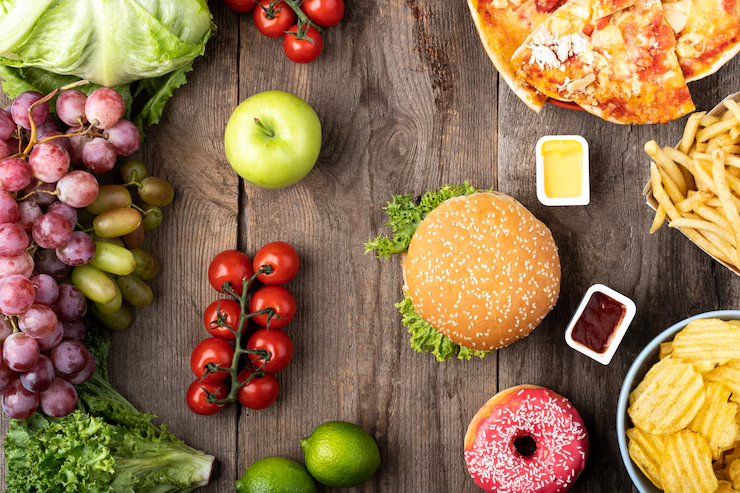
A plant-based diet is not just a passing trend—it’s a scientifically supported approach to improving cardiovascular health. By focusing on whole, nutrient-rich foods, a plant based diet blood pressure plan can naturally reduce hypertension and support overall wellness without relying solely on medications.
This eating style emphasizes fruits, vegetables, whole grains, legumes, nuts, and seeds, which are packed with potassium, magnesium, fiber, and antioxidants. These nutrients work together to relax blood vessels, improve circulation, and lower strain on the heart. As part of a plant based diet blood pressure approach, these foods replace processed items high in sodium and unhealthy fats.
Whether you are managing mild hypertension or working toward reducing medication use, adopting a plant based diet blood pressure lifestyle can make a lasting impact. Combined with exercise, stress management, and adequate hydration, it offers a safe, sustainable path to healthier blood pressure and a stronger heart.
📌 FAQs
❓ Can a plant based diet lower blood pressure naturally ?
Yes, a plant based diet blood pressure approach can help lower blood pressure naturally by reducing sodium intake, increasing potassium-rich foods, and improving overall heart health.
❓Do I need to completely avoid animal products in a plant based diet blood pressure lifestyle ?
While full avoidance offers the best results, even reducing animal products and focusing on whole plant foods can benefit your plant based diet blood pressure journey.
❓How long does it take to see results from a plant based diet blood pressure plan ?
Many people notice improvements in blood pressure within a few weeks of following a plant based diet blood pressure plan, especially when combined with exercise and reduced sodium intake.
❓What foods should I prioritize in a plant based diet blood pressure program ?
Fruits, vegetables, whole grains, legumes, nuts, seeds, and leafy greens are key for an effective plant based diet blood pressure plan.
❓Is a plant based diet blood pressure approach safe for everyone ?
Yes, it is generally safe for most people, but individuals with specific health conditions should consult a doctor before starting a plant based diet blood pressure plan.
